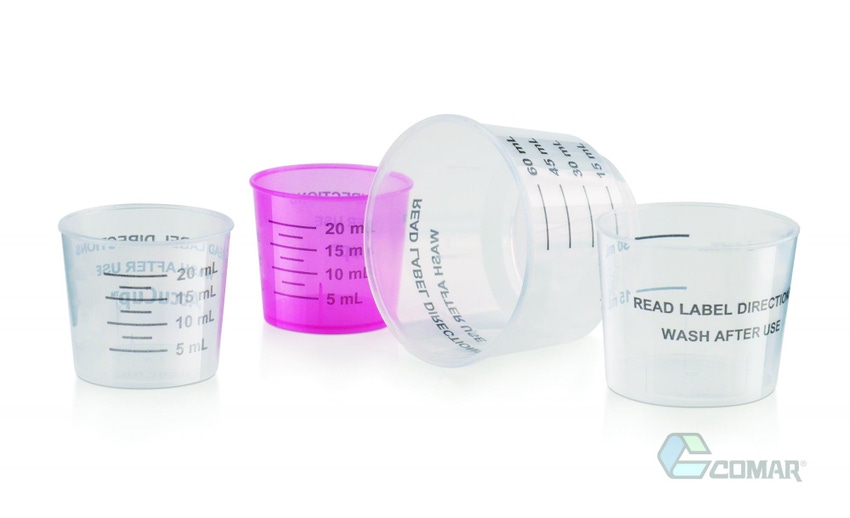Hitting the mark in dosage cup accuracy
February 19, 2016

Dosing and dispensing technology provider Comar LLC has just commissioned its third dosage cup printer. The new production line utilizes Comar’s proprietary approach for matching the correct printing plate to each cup and for ensuring accurate application of cup markings, the company reports.
Such expanded capacity and capability comes just after a recall reportedly involving dosage cup defects. (A Comar spokesperson reports that its cups were not involved.)
According to Comar, it was the first company to print measurement markings on the outside of its dosage cups as an alternative to embossing. Its AccuCups are printed with FDA-compliant, food-grade inks.
PMP News checked in with John Daly, Comar’s Director Technical Operations, asking a few questions about the technology’s evolution and some options for enhancing dosing safety.
PMP: When did Comar first introduce its internal systems to control accuracy, and how are they different from what other systems may be used in the industry?
Daly: Comar started printing oral dispensers in 2003, which is when we developed the equipment and processes to control accuracy. We built on this when we added the AccuCup printed dosing cups in 2007. Because calibration accuracy is so critical, Comar goes above and beyond what’s typically included in inspection and verification. We have all incoming print plates inspected by quality engineering, not just the initial design, during which we verify accuracy of all lines, and not just one or two lines, which is typical. We also require customers’ approval of new artwork for the actual product dispensed.
PMP: Can you describe how Comar’s system has evolved over the years and what the latest enhancements entail?
Daly: The printing equipment on the market is very good, and while Comar has made proprietary changes to improve this equipment, the real difference at Comar is the system, processes, and people! Early on we did adopt vision inspection of every cup produced, and over the years we have continued to upgrade to the latest technology in imaging and lighting. We had also moved to inline processes reducing the number of transfer steps, which increases accuracy and consistency.
PMP: Does Comar advise the use of color to help markings stand out?
Daly: Comar has the capability to run up to three print colors at the same time and has over 30 different colors available. In addition, the cups themselves can be colored. Typically, black ink on a clear cup provides the best color contrast, but it also depends on the medication in the cup, where white print contrasts well with a green liquid, for example. So I would say that carefully matching component, print, and product colors would make it easier for the consumer to measure dosing accurately.
PMP: Any other steps that drug manufacturers can take to promote accurate dosing?
Daly: First and foremost, it is very important to use the right-sized device for the product being dispensed. Using a large cup for a small dose will reduce the accuracy, for example. We have a handy chart that illustrates this point well. This was developed to educate Comar customers on this point. Other possible steps include the use of 2-D bar coding on the cup to verify that the correct cup is matched with the medication on the packaging line, and printing the name of the product on the cup will help the consumer safely match the cup with the product in the home.
About the Author(s)
You May Also Like




